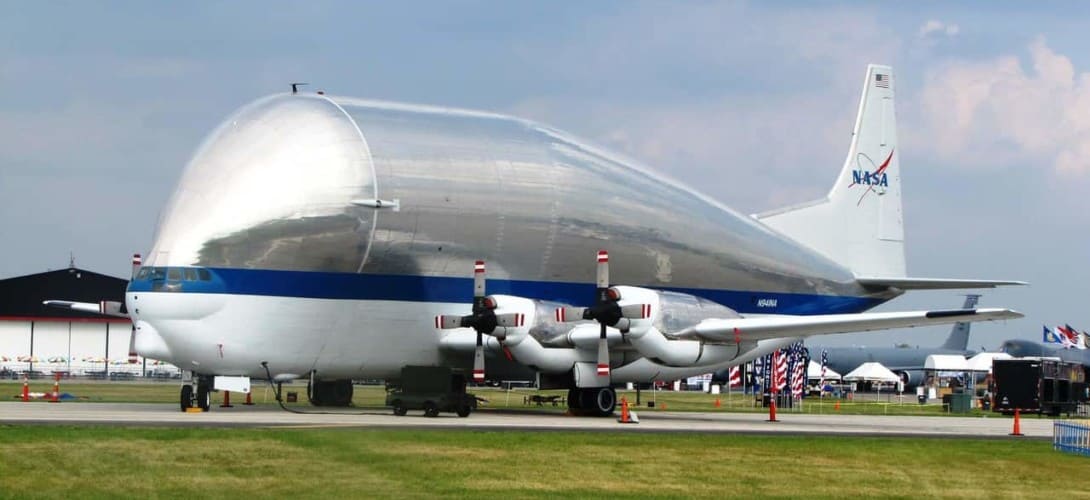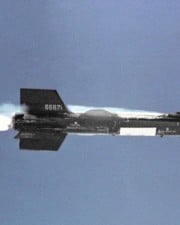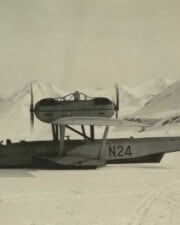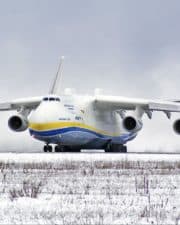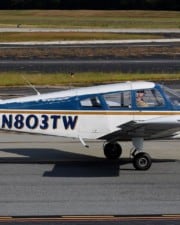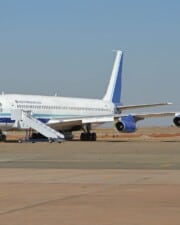There are jumbo jets, there’s Jet Blue – and then there are these gigantic cargo planes that blow the rest of the competition away with their sheer size, power, and carrying capacity. Size matters, and these sky giants prove it.
The first thing that probably comes to mind with large cargo planes like these is why anyone would ever need anything as big as one of these planes. B-52s and Jet Blues are big, but the biggest cargo jets on this list are several times larger than all of them.
The largest cargo planes are called upon for everything from humanitarian aid to military support. As a result of those different jobs there are different types of cargo planes, and many of these cargo planes are considered in terms of how many troops and how much military equipment they can carry as well as raw carrying capacity.
The United States and Soviet Union/Russia account for the majority of cargo planes on this list.
What follows are the top 10 largest cargo planes of all-time.
1. Antonov An-225 Mriya
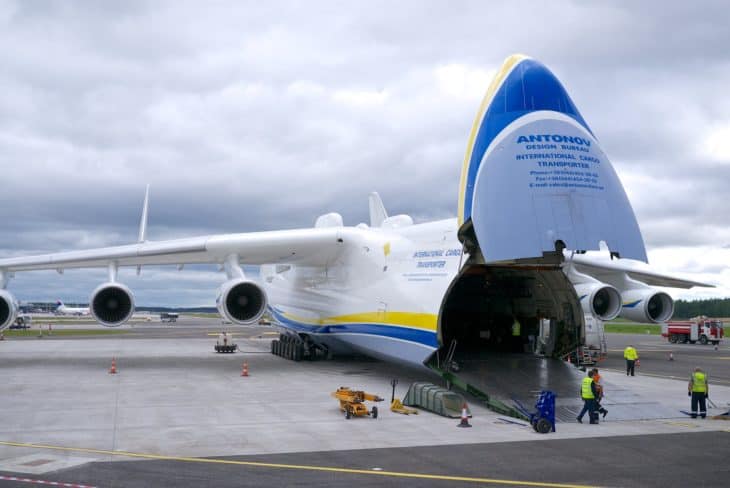
The biggest cargo plane of all-time, this Soviet-era behemoth was capable of carrying 650 tons. It holds the record for the single largest item carried as a payload at 418,834 lbs, and was the heaviest aircraft ever constructed.
It also set the record for the most weight carried by a cargo plane at a whopping 280 tons, which is as much as 2.5 blue whales or 3.5 Space Shuttles – and you could probably guess which it was built to carry. (Though wouldn’t the blue whale have been fun?)
It had a crew of six, was 84 m long, had a wingspan of 88.4 m (the largest wingspan of any operational aircraft), had a fuel capacity of more than 300,000 kg, and was powered by 6×Progress D-18T turbofans that could generate a cruising speed of 500 mph and maximum speed of 530 mph.
2. Antonov An-124 Condor

Despite its Russian origins, the Condor has actually been frequently used by NATO by at least 18 different members.
In 2020, Condors were grounded out of an abundance of caution due to an incident in Novosibirsk that resulted in damaged wings and landing gear. Nevertheless, since the early 80s the Condor has been one of the biggest and most consistently-used cargo planes in use.
The Condor has a crew of six (a pilot, copilot, navigator, flight engineers, and a radio operator) and can carry a couple of additional loadmasters. It measures 226 ft long, has a gross weight of 471,789 lbs, a maximum takeoff weight of 888,258 lbs, and has a cruising speed of 537 mph.
3. Antonov An-22 Antei

This entry into the Antonov line was first introduced into the Soviet Air Force in 1967 and is still in use by Russia today.
In some cases, it was used for humanitarian aid, such as to Peru in 1970 following an earthquake. In other cases, it was used to support Soviet military interests, such as supplying the Syrian-Egyptian side during the Yom Kippur War. They are planned to remain in use until 2033.
The Antei has a crew of five or six, a carrying capacity of 176,370 lbs, measures 190 ft long, has a wingspan of 211 ft 3 in., and is powered by 4xKuznetsov NK-12MA turboprop engines, which gives it a maximum speed of 460 mph.
4. Aero Spacelines Super Guppy

One of the most important jobs of these large cargo planes can be carrying the Space Shuttle and other space-bound vehicles and components. The most famous and effective of these have been the Space Guppy, which since 1965 carried Apollo IV rockets and other components for the Apollo program.
Its role in NASA’s space missions have continued over the years. In November 2019, a Super Guppy was used to transport an Orion spacecraft. A crowd turned out to watch it touch down at Mansfield Lahm Airport. The Orion spacecraft was meant for the Artemis I.
The Super Guppy has a crew of four, measures 143 ft long with a wingspan of 155 ft 3 in., can have a maximum takeoff weight of 170,000 lbs, is powered by 4×Allison 501-D22C turboprop engines, has a cruising speed of 250 mph and maximum speed of 290 mph.
5. Airbus A300-600ST Beluga

In the battle between Jet Blue and Airbus, the latter has built a couple huge cargo planes, including this one. “Beluga” is the Russian word for “whale,” which should give you an idea of this cargo plane’s size, which fittingly enough was designed in 1995 to replace the Super Guppy.
It has lived up to that legacy thus far. In 2001, it transported an Advanced Transfer Vehicle from Turin to Amsterdam. In 2009, the Beluga was used to transport the Tranquility Module from the International Space Station from Turin to Kennedy Space Center in Florida.
The Beluga can boast a crew of two people. It is 184 ft 3 in. long, and it has a weight capacity of 103,617 lbs, but a maximum takeoff weight of 341,717 lbs. It is powered by 2×General Electric CF6-80C2A8 turbofans and can attain a maximum speed of 537 mph.
6. Airbus A400M Atlas
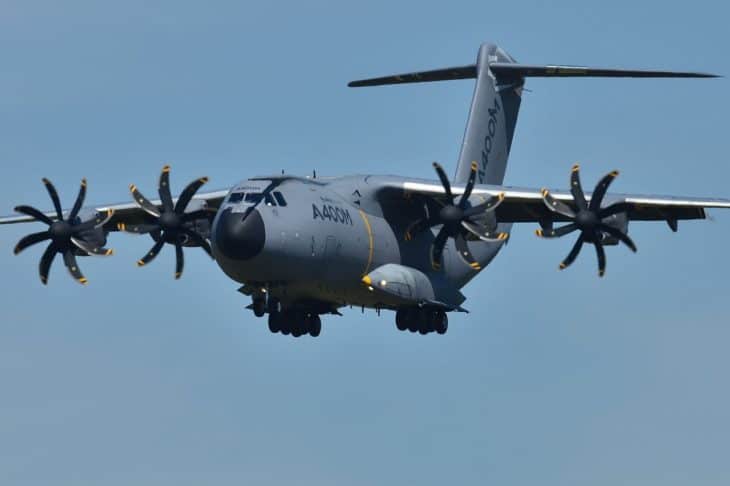
Another entry into the large cargo plane industry by Airbus, the Atlas is operated by several countries in Europe, including the United Kingdom, France, and Germany, as well as Turkey. In 2019, it was deployed as a tanker to refuel German aircraft involved in the fight against ISIS.
However, the Atlas’ operational history has not been free of problems. In 2015, an Atlas crashed on its initial test flight upon taking off from San Pablo airport, resulting in the death of four Spanish crewmembers. The digital engine control system was not able to read the engine sensors.
The atlas has a crew of three or four, has a weight capacity of 81,600 lbs, can carry 116 paratroopers in a military capacity, is 148 ft long, has a maximum takeoff weight of 310,852 lbs, and has a maximum speed of 552 mph.
7. Lockheed C-5 Galaxy
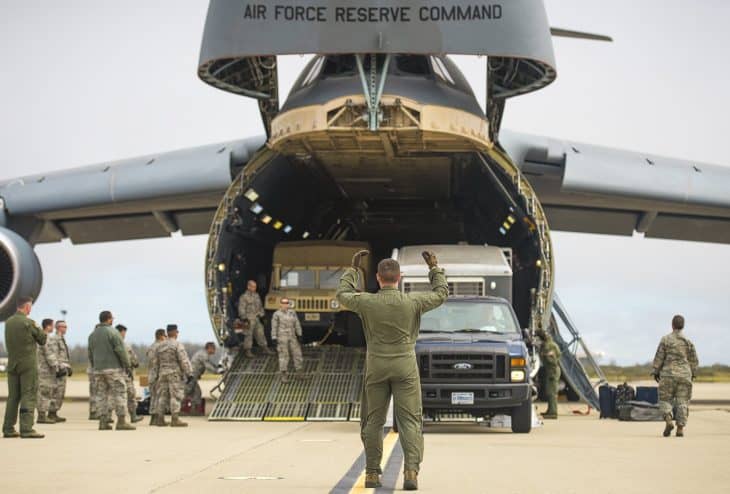
A little smaller than the Antonov, the Galaxy was developed and released over the late 60s and early 70s. During the Yom Kippur War, Galaxies were used to supply Israel with aid. However, there have also been issues during its operational history, with 169 fatalities resulting from multiple crashes.
One of the most notable things about the Galaxy is the fact that it has been particularly amenable to refits and variations over the course of its decades-long operational history. These refits have often been focused on addressing problems with its wings and adapting it for military transport use.
The Galaxy has a crew of four to seven (made up of a pilot, copilot, flight engineers, and loadmasters), is 247 ft 1 in. long, has a gross weight of 840,000 lbs and maximum takeoff weight of 920,000 lbs, and has a maximum speed of 532 mph.
8. Lockheed Martin C-130J Super Hercules

This model uses a four-engine setup. Over 400 Super Hercules models have been made, and they have been in use by 17 countries. The US Air Force and Marine Corps used the Super Hercules a lot in both Iraq and Afghanistan. NATO used it in the Libyan Civil War.
This model has seen so much use that it has surpassed more than one million hours in the air. The Super Hercules has also been modified for use in firefighting. The 146th Airlift Wing has used it to fight some of the historically huge fires that have ravaged California.
The Super Hercules has a crew of three, has a cruising speed of 400 mph, a maximum speed of 417 mph, and when outfitted for military use can carry 92 troops, 64 airborne troops, 2 to 3 Humvees, and 1 Kodiak Light Armored Vehicle.
9. Boeing C-17 Globemaster III

First deployed in 1991, the Globemaster III has seen lots of use over the past three decades, during which time it has broken 13 records, including its payload-to-altitude ratio. Britain’s Royal Air Force Globemaster IIIs alone had amassed 40,000 hours by 2008.
The Globemaster III was deployed for service conveying troops and equipment into Afghanistan and Iraq during US involvement in the region. In 2004, a Globemaster III involved in the transportation of President Bush to New Mexico was so heavy that it cracked the asphalt, damaging the runway.
The Globemaster III has a crew of three, is 174 ft long, has a maximum speed of 670 mph, has a carrying capacity of 170,900 lbs, and in terms of military carrying capacity can carry 134 troops or 102 paratroopers, and vehicles such as 1 M1 Abrams tank or 3 Strykers.
10. Boeing 747 Dreamlifter

Several of the biggest cargo planes over the years have been variations on the ever-versatile Boeing 747, and this is a perfect example of one. There are four of these Dreamlifters in existence, all of which are conversions of existing 747s. Boeing completed all four Dreamlifters by 2010.
These Dreamlifters have been active as of late, with a Dreamlifter carrying 500,000 masks landing at Salt Lake City International Airport in July 2020 as part of Utah’s efforts to combat the virus. Causes such as this demonstrate how large cargo planes can provide a boost to humanitarian efforts.
The four converted Dreamlifters are piloted by as few as two. They are 235 ft 2 in. long, a wingspan of 211 ft 5 in., 545 mph, and a maximum weight capacity of 803,001 lbs.
Related Posts
